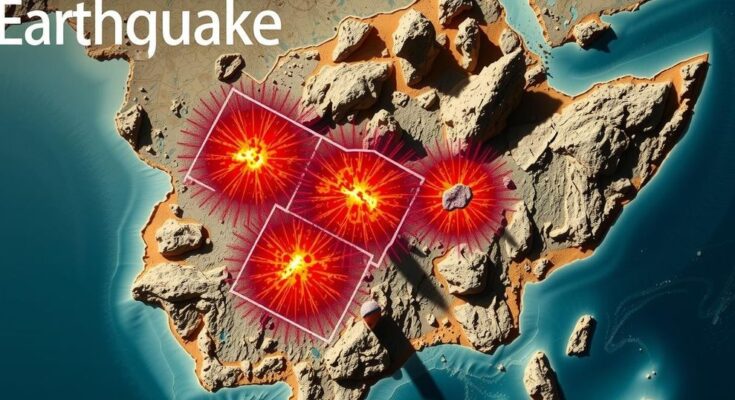Ethiopia recorded a 5.8 magnitude earthquake near Addis Ababa, following a 5.5 quake the day prior and over 30 smaller tremors, sparking concerns over potential disasters. Authorities are relocating at-risk residents in light of increasing seismic activity and recent volcanic eruptions.
On Saturday, Ethiopia experienced a significant earthquake measuring 5.8 in magnitude, according to reports from the U.S. Geological Survey and the German Research Centre for Geosciences. The epicenter of the quake was located approximately 42 kilometers east of the capital, Addis Ababa, at a shallow depth of 10 kilometers. This seismic event was not an isolated incident; just one day prior, an earthquake of magnitude 5.5 was recorded in the same region, compounded by over 30 smaller tremors occurring throughout the past week, indicating escalating seismic activity.
In conjunction with these earthquakes, Anadolu Ajansi reported earlier on the same day of a volcanic eruption at Mount Dofan, situated in central Ethiopia. The recent and frequent tremors have raised alarm among both residents and local authorities about the potential for a major seismic disaster, particularly in the Awash Fentale area, which is approximately 230 kilometers from Addis Ababa. Over the past weeks, the region has recorded numerous minor quakes, prompting increased anxiety among the local populace.
In efforts to mitigate the risks posed by these seismic activities, Regional Administrator Abdu Ali has stated that officials are actively working to relocate vulnerable populations to safer locations. The state-run Fana Broadcasting Corporation has reported on these precautionary measures. Furthermore, Ali noted that stronger tremors have continued, with some being felt in Addis Ababa overnight, further underscoring the ongoing situation and the need for vigilance among local communities.
The article discusses a recent series of seismic events in Ethiopia that have heightened concerns about potential disasters. Earthquakes are common in the East African Rift region where geological activity is prevalent. The history of earthquakes in this region often prompts reactions from authorities and residents alike, particularly when there is a pattern of increasing seismic activity, such as multiple tremors over a short duration. As of late, this area has seen significant geological disturbances, including both earthquakes and volcanic activity, thus necessitating precautionary actions by local governments.
In summary, Ethiopia has experienced a series of notable seismic events, including a significant 5.8 magnitude earthquake, compounded by recent volcanic activity. The rising frequency and intensity of these tremors have raised significant concerns regarding public safety. In response, regional authorities are taking steps to relocate at-risk populations to safer areas, illustrating the seriousness of the situation and the emphasis on disaster preparedness in the affected regions.
Original Source: www.khaleejtimes.com




